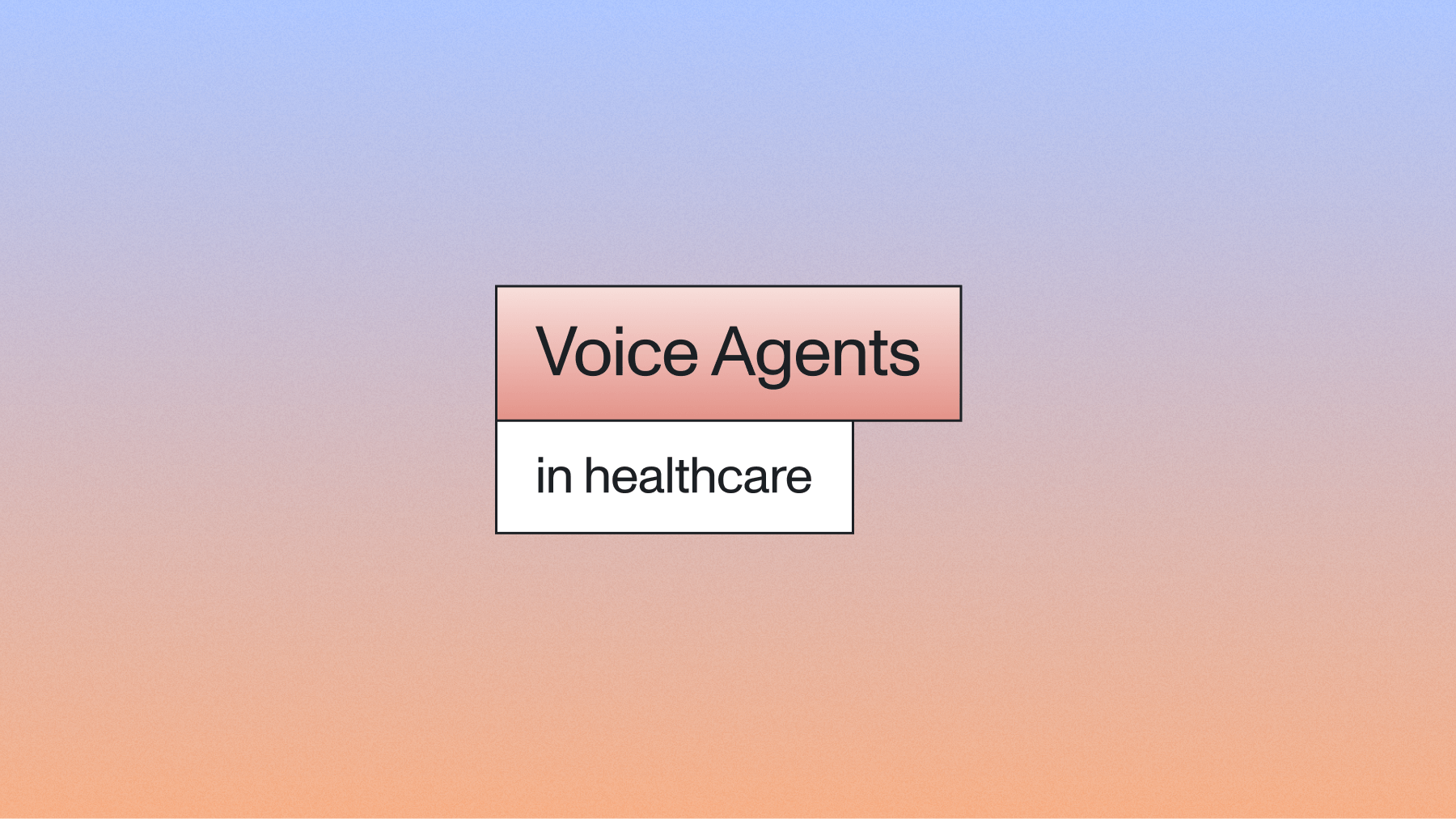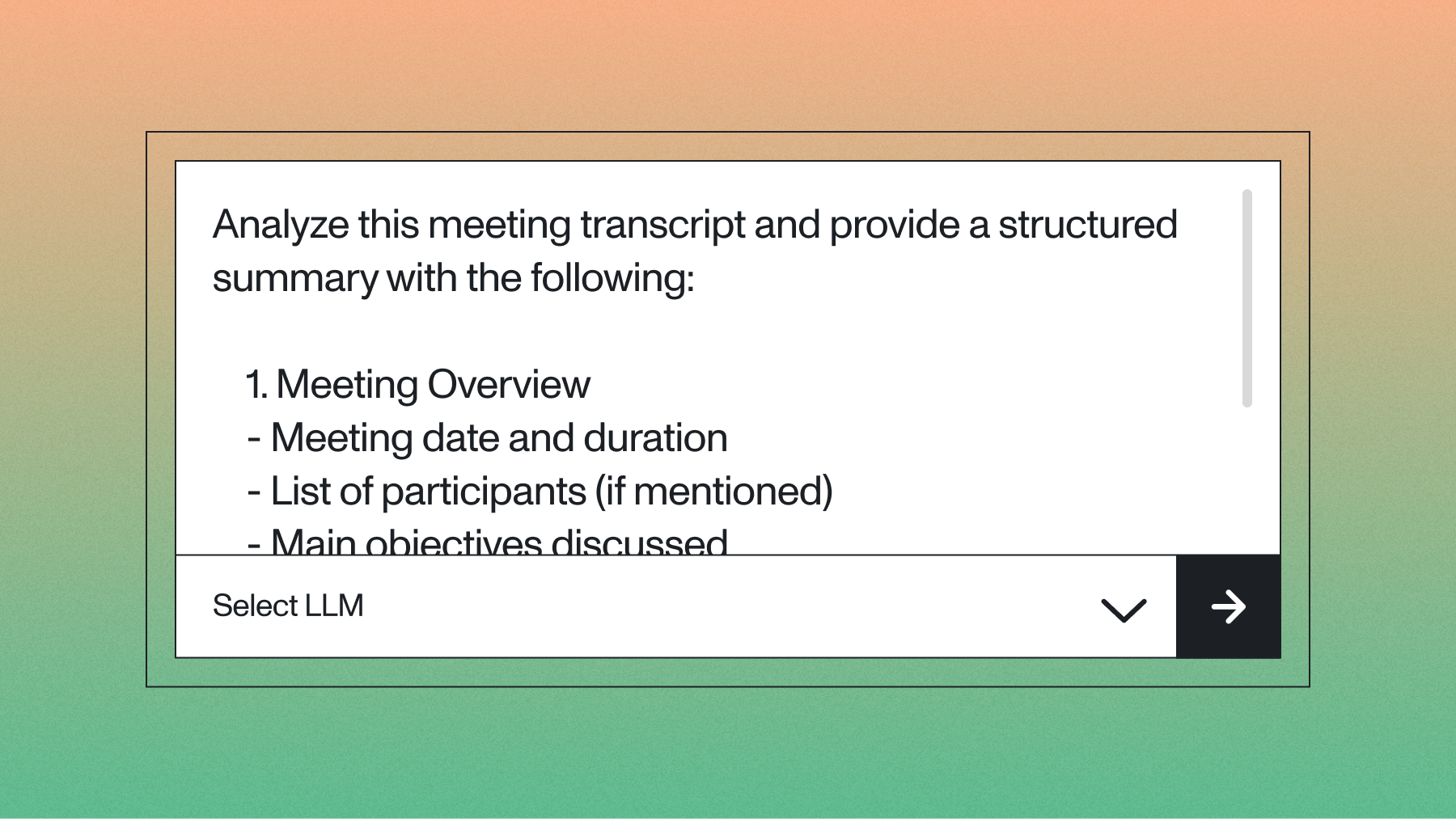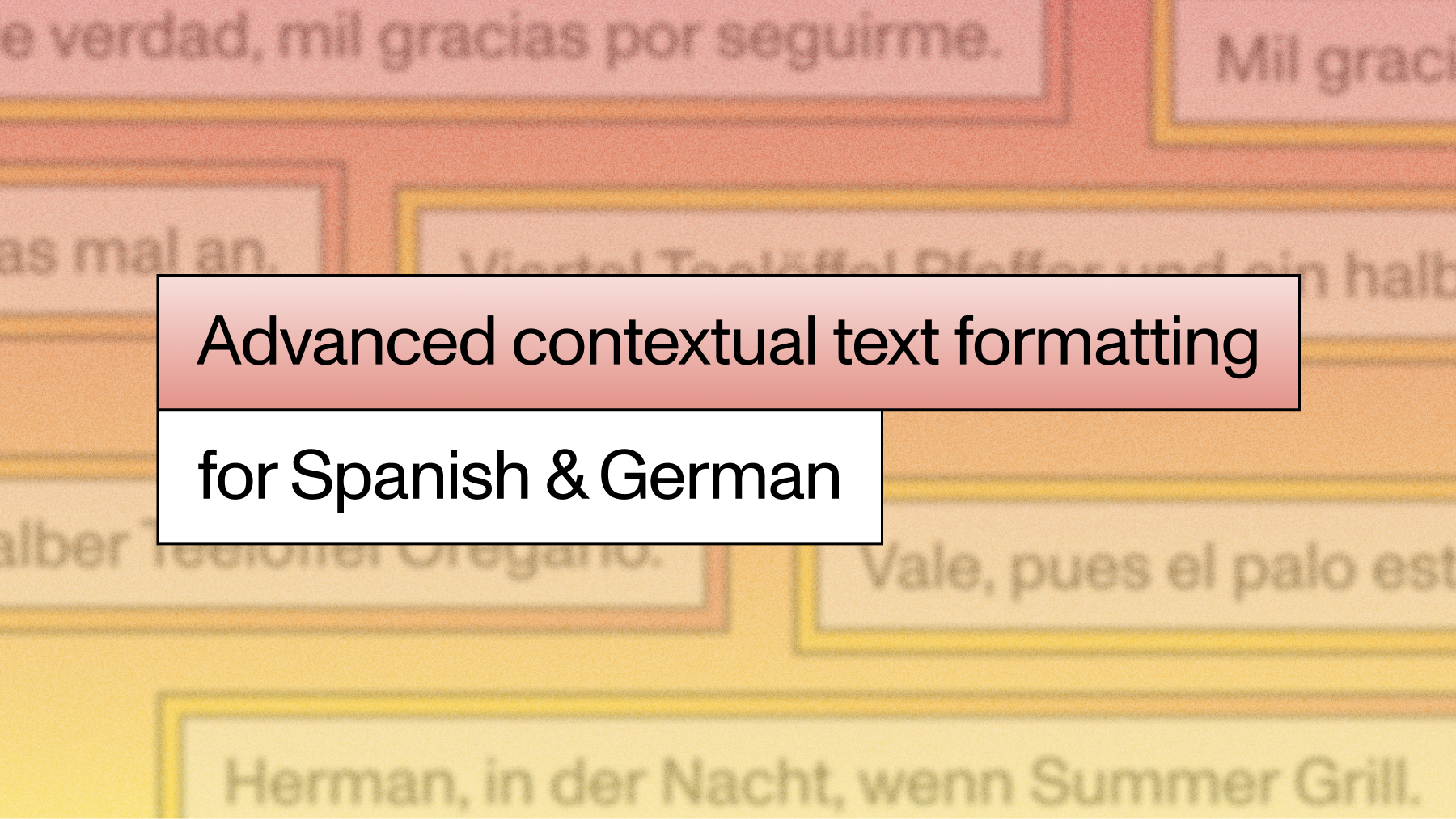Conversational AI in healthcare: maturity model and 7 use cases
Learn how conversational AI in healthcare is driving high-impact use cases for everything from ambient documentation to mental health support.



Imagine a patient calls their doctor's office at midnight with chest pain. Instead of waiting until morning or heading to the emergency room, they speak with an AI system that understands medical terminology, asks the right follow-up questions, and determines whether this needs immediate attention or can wait for a scheduled appointment.
Years ago, we might have labeled that science fiction, but it's actually happening right now in healthcare systems that have moved beyond basic chatbots to deploy truly intelligent conversational AI.
Healthcare AI spending will reach $187.69 billion by 2030, but three-quarters of leading healthcare companies remain stuck in pilot phases with basic FAQ bots. The difference? Organizations that succeed follow a systematic maturity model that builds from simple voice commands to empathetic patient engagement systems.
The disconnect isn't about technology limitations. Modern conversational intelligence can handle complex medical discussions, understand clinical context, and respond with appropriate empathy. The real challenge is knowing how to go from foundational capabilities toward truly helpful (transformative) applications.
Some organizations jump straight into ambitious projects and crash when the technology can't handle real-world complexity. Others get stuck forever in basic implementations that deliver minimal value. The most successful healthcare systems follow a deliberate progression that builds functionality systematically while learning what works in their specific environment.
Below, this guide maps out that progression through a practical maturity model and examines real-life applications where conversational AI is delivering measurable results today.
What is conversational AI's role in healthcare?
Conversational AI turns robotic phone trees into natural conversations. Instead of pressing 1 for appointments and 2 for prescriptions, patients simply say 'I need to reschedule my cardiology appointment'—and the system understands exactly what they mean.
Traditional systems force users into rigid menu structures, but conversational AI adapts to natural speech patterns and maintains context throughout complex interactions.
In healthcare, this technology automates:
- Patient interactions
- Clinical documentation
- Administrative workflows
And it does it while preserving the empathy and contextual understanding that medical care demands.
Advanced speech AI vs. basic rule-based systems
The primary difference between advanced speech AI and basic rule-based systems lies in their ability to handle the unpredictable nature of real-world healthcare conversations.
Traditional healthcare chatbots break down when patients describe symptoms in their own words or when medical discussions involve specialized terminology. Advanced systems powered by medical-grade speech recognition can accurately capture complex clinical language. That's the difference between a system that understands "atrial fibrillation" versus one that produces gibberish when doctors use proper medical terms.
Speaker diarization solves another critical healthcare challenge: determining who said what in multi-party clinical conversations. Emergency departments and consultation rooms involve multiple voices speaking simultaneously, but advanced systems can attribute each statement correctly to maintain accurate documentation.
LLM integration through platforms like LLM gateway let these systems move beyond simple transcription to actual clinical understanding. They can summarize patient encounters, extract key medical information, and identify potential care coordination needs.
This combination creates conversational AI that transforms work in healthcare settings.
A speech technology maturity model for conversational AI
Healthcare organizations don't all start from the same place when implementing conversational AI. A rural clinic with basic EHR systems has different challenges than a major academic medical center with dedicated IT teams. That's why we've developed a maturity model that recognizes these differences and provides a simple progression path for any healthcare organization.
Stage 1: Foundational Exploration
- Advanced speech technology: Basic Speech-to-Text (STT)
- Common applications: Simple voice commands for non-critical systems, isolated medical dictation pilots with general vocabulary.
Stage 2: Integrated & Governed Implementation
- Advanced speech technology: STT with improved medical vocabulary recognition Basic Text-to-Speech (TTS) for scripted outputs Basic Natural Language Understanding (NLU) for intent capture.
- Common applications: Integrated clinical dictation directly into EHRs; Voice-based data entry for structured forms (e.g., patient intake); Scripted patient reminders and notifications via voice.
Stage 3: Optimized & Proactive Assistance
- Advanced speech technology: High-accuracy STT for specialized medical terminology & diverse accents; Real-time speaker diarization; Context-aware dialogue management; Natural sounding TTS; Initial secure LLM integration (for Q&A, summarization with human oversight)
- Common applications: Ambient clinical documentation (transcribing and attributing speech in multi-party consultations); Voice-based clinical decision support tools; Proactive patient outreach with more personalized and natural-sounding dialogue.
Stage 4: Transformative & Empathetic Engagement
- Advanced speech technology: Advanced, adaptive STT/NLU capable of understanding nuance and sentiment Empathetic TTS & Speech Synthesis (conveying emotional nuance) Smart and ethically governed LLM integration (for complex reasoning, generation, and nuanced interaction) Voice biometrics for seamless and secure authentication
- Common applications: Empathetic virtual health assistants for chronic disease management or mental wellness support; Real-time diagnostic assistance with conversational interaction; Hyper-personalized patient education and engagement.
7 important use cases for conversational AI in healthcare
1. Ambient clinical documentation
Walk into the doctor's office during a typical patient consultation, and you'll notice something different—the doctor is actually looking at the patient instead of typing frantically into a computer screen. That's because an ambient clinical documentation system is quietly listening to their conversation, automatically capturing the medical discussion and turning it into structured clinical notes.
The problem: Physicians spend excessive time on documentation instead of patient care, with manual note-taking interrupting consultations and reducing care quality.
The solution: Real-time transcription with speaker identification and AI summarization automatically generates structured clinical notes from natural doctor-patient conversations.
The documentation burden wastes valuable time that should be spent on actual patient care. Traditional dictation helps, but it still requires doctors to step away from patients to record notes, then spend additional time editing and organizing the content later.
Ambient clinical documentation changes this completely. Advanced speech recognition systems with medical-grade accuracy capture natural doctor-patient conversations in real-time. Speaker diarization technology knows whether the doctor, nurse, or patient is speaking, even in busy clinical environments. AI-powered summarization extracts the important clinical information—symptoms, diagnoses, treatment plans—and automatically generates structured notes that integrate with EHR systems.
2. Intelligent patient triage
Emergency departments face a never-ending challenge: distinguishing between true emergencies and cases that could be handled in urgent care or primary care settings. Traditional triage relies heavily on nursing staff who may be stretched thin during peak hours, and this leads to inconsistent assessments and inappropriate patient routing.
The problem: Emergency departments are overwhelmed with non-urgent cases while inconsistent triage protocols and limited nursing staff create bottlenecks in patient assessment.
The solution: Voice-based symptom collection with medical terminology understanding and AI-powered severity assessment automatically routes patients to appropriate care levels.
Intelligent patient triage systems change this dynamic. These AI-powered platforms can conduct advanced symptom interviews, use clinical decision support algorithms to evaluate severity levels, and automatically route patients to the most appropriate care setting.
The technology captures nuanced symptom descriptions and correlates them with established clinical protocols. This helps maintain consistent triage decisions regardless of staffing levels or time of day.
3. Medication management
Medication adherence remains one of healthcare's most persistent challenges. Studies show that up to 50% of patients don't take medications as prescribed—this leads to treatment failures, disease progression, and expensive hospital readmissions.
The challenge: Poor medication commitment leads to treatment failures and readmissions, while manual medication reconciliation processes are time-consuming and error-prone.
The AI approach: Voice-activated reminders, conversational adherence monitoring, and automated drug interaction checking create comprehensive medication management support.
Voice-activated reminder systems adapt to individual patient schedules and preferences to make adherence easier and more natural. These systems have meaningful conversations about how patients are feeling, tracking both compliance and potential side effects or concerns.
The technology goes beyond simple reminders to provide intelligent medication reviews to create a comprehensive safety net that catches issues before they become serious problems.
4. Mental health support and crisis detection
The mental health provider shortage can't keep up with growing demand, no matter how many professionals you have on staff. Crisis situations often develop rapidly, but traditional support systems rely on patients to explicitly ask for help or recognize their own risk levels.
The gap: Mental health provider shortages limit care access while crisis situations often go undetected until it's too late.
The AI solution: Empathetic conversational support with real-time sentiment analysis and voice pattern monitoring automatically escalates high-risk situations.
Advanced conversational AI fills this gap by providing empathetic, always-available mental health support that can detect crisis situations in real-time. These systems analyze voice patterns, speech cadence, and emotional markers to identify when someone might be in distress—even when they haven't explicitly stated it.
5. Telehealth upgrades
Telehealth adoption exploded during the pandemic, but it's still not a perfect alternative. Many virtual consultations lack the comprehensive documentation that in-person visits generate, creating gaps in patient records.
The limitations: Telehealth consultations often lack comprehensive documentation while technical barriers prevent many patients from accessing virtual care effectively.
The enhancement: Real-time transcription with automated summarization and voice-based portal access removes technical barriers while ensuring quality documentation and compliance monitoring.
Conversational AI transforms telehealth from a basic video call into a comprehensive clinical encounter. Real-time transcription captures the entire consultation, AI summarization extracts important clinical information for structured documentation, and voice-based patient portals eliminate technology barriers, allowing patients to access care with simple voice commands.
6. Insurance and prior authorization
Prior authorization has become healthcare's administrative nightmare. These processes delay patient care by days or weeks while creating massive administrative overhead for providers. Manual claims processing compounds the problem with high error rates that lead to denials and appeals.
The bottleneck: Prior authorization delays critical patient care while manual claims processing creates errors, denials, and confusion about coverage benefits.
The streamlined approach: Automated prior authorization generation from clinical conversations and voice-based claims processing streamline administrative workflows.
Conversational AI reduces complexity by automating the entire prior authorization workflow. The system listens to clinical conversations, extracts relevant medical justifications, and generates prior authorization requests with proper documentation. Voice-based claims processing lets patients check status, file appeals, and understand their benefits through natural conversation rather than confusing phone trees.
7. Patient education and care instructions
Studies show that patients forget up to 80% of medical information shared during visits, and discharge instructions are frequently misunderstood. Language barriers make these problems worse, leaving non-English speakers at risk for poorer outcomes.
The problem: Patients frequently misunderstand discharge instructions and medical information, leading to readmissions and poor outcomes.
The solution: Conversational delivery with interactive Q&A and multi-language support helps patients understand their care instructions.
Conversational AI turns patient education from one-way information delivery into interactive learning experiences. These systems provide personalized discharge instructions tailored to individual comprehension levels and health literacy. Patients can ask follow-up questions, request clarification, and receive repeated explanations.
Multi-language support stops language barriers from compromising care quality, while interactive Q&A functionality helps patients work through complex medical concepts at their own pace.
How AssemblyAI powers conversational AI in healthcare
Healthcare conversational AI is only as good as its foundation: the speech recognition features that capture medical conversations. AssemblyAI provides the technology that makes these applications possible in real clinical environments.
Medical-grade speech recognition: Slam-1 delivers up to 66% reduction in missed entity rates (MER) for medical terminology when using the keyterms_prompt parameter, supporting up to 1,000 domain-specific terms. Real-time processing with sub-500ms initial response enables natural conversation flow during live clinical encounters.
Advanced audio intelligence: Speaker diarization accurately identifies who's speaking in multi-party clinical conversations. Sentiment analysis captures emotional context in patient interactions, while medical entity detection automatically identifies symptoms, diagnoses, medications, and procedures from natural speech.
LLM integration for healthcare: LLM gateway provides secure integration with advanced language models for medical summarization, clinical Q&A, and care plan generation.
Build conversational AI solutions that work
Conversational AI has moved from experimental technology to essential healthcare infrastructure. These applications show real value across clinical documentation, patient engagement, and administrative workflows. However, success hinges entirely on the underlying speech technology foundation.
Generic speech recognition just can't handle medical terminology complexity, multi-speaker clinical environments, or the nuanced communication requirements that healthcare demands. The difference between transformational outcomes and disappointing pilots ultimately comes down to choosing specialized platforms with proven medical expertise.
See the difference for yourself with AssemblyAI. Get started with free credits to test Slam-1's medical terminology accuracy and explore what's possible.
Lorem ipsum dolor sit amet, consectetur adipiscing elit, sed do eiusmod tempor incididunt ut labore et dolore magna aliqua. Ut enim ad minim veniam, quis nostrud exercitation ullamco laboris nisi ut aliquip ex ea commodo consequat. Duis aute irure dolor in reprehenderit in voluptate velit esse cillum dolore eu fugiat nulla pariatur.




